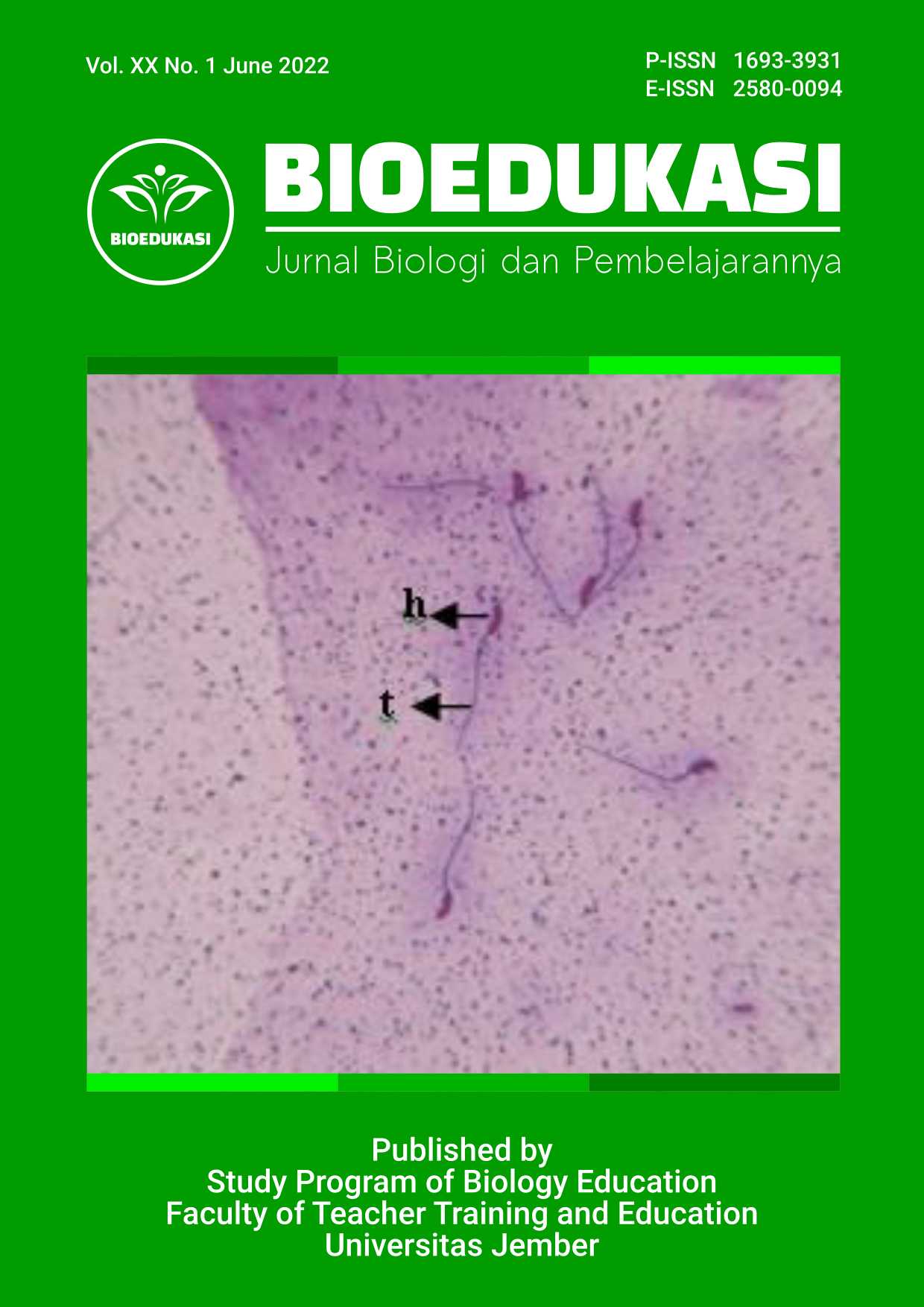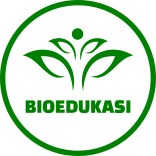ANTIOXIDANT ACTIVITY, TOTAL PHENOLIC CONTENT, AND FTIR ANALYSIS OF FERMENTED BADUY HONEY WITH PINEAPPLE
DOI:
https://doi.org/10.19184/bioedu.v20i1.29775Keywords:
Antioxidant, Total Phenolic Content, FTIR, Fermented Baduy honeyAbstract
Honey is one of the liquid foods known for its high nutritional value. Honey contains macronutrient and micronutrient compounds. The composition of honey is usually different from one honey to another and has different biological activities. Baduy honey is one of the forest honey sold by the Baduy tribe. Fermented Baduy honey is suspected of having better biological activity. This study aims to determine the antioxidant activity of fermented Baduy honey, the total phenolic compound, and FTIR analysis. The antioxidant activity was determined against DPPH (2,2-Diphenyl-1-picrylhydrazile) by measuring the absorbance of the sample at the wavelength of 517 nm. The Total phenolic compound was also determined using folin ciocalteu’s method to measure the absorbance of the sample at the wavelength of 765nm. The FTIR analysis was also carried out to detect functional groups in Baduy honey. The antioxidant activity shows that fermented Baduy honey has the highest antioxidant capacity (IC 50 = 90,26 µg/mL) after three days of fermentation with pineapple and has better antioxidant capacity than non-fermentation Baduy honey. Total phenolic content shows that Baduy honey has 2,04 µg/mL. The FTIR analysis result indicates the presence of phenolic compounds, which can be found in flavonoids.
Downloads
References
Alvarez-Suarez, J. M., González- Paramás, A. M., Santos-Buelga, C., & Battino, M. (2010). Antioxidant characterization of native monofloral Cuban honeys. Journal of Agricultural and Food Chemistry, 58(17), 9817–9824.
Alvarez-Suarez, J. M., Gasparrini, M., Forbes-Hernández, T. Y., Mazzoni, L., & Giampieri, F. (2014). The composition and biological activity of honey: A focus on manuka honey. Foods. 3(3), 420–432
Bertoncelj, J., Doberšek, U., Jamnik, M., & Golob, T. (2007). Evaluation of the phenolic content, antioxidant activity and colour of Slovenian honey. Food Chemistry, 105(2), 822–828.
Bhaskar, A. (2011). Phytochemical screening and in vitro antioxidant activities of the ethanolic extract of Hibiscus rosa sinensis L. Scholars Research Library Annals of Biological Research, 2(5), 653–661.
Dzugan, M., Tomczyk, M., Sowa, P., & Grabek-Lejko, D. (2018). Antioxidant activity as biomarker of honey variety. Molecules, 23(8).
Gunawan, R., Kimia, J., Matematika dan Ilmu Pengetahuan Alam, F., Mulawarman Jalan Barong Tongkok, U., Gn Kelua, K., & Biologi, J. (2018). Uji Fitokimia dan Uji Penentuan aktvitas antioksidan dari madu Trigona incisa. Jurnal Atomik, 3(1), 18-21.
Karaçıl, M. Ș., & Tek, N. A. (2013). Fermented products produced in the world: historical process and relationships with health. Schemantic Scholar, 27(2), 163-173.
Margaoan, R., Cornea-Cipcigan, M., Topal, E., & Kösoģlu, M. (2020). Impact of fermentation processes on the bioactive profile and health-promoting properties of bee bread, mead and honey vinegar. In Processes 8(9).
Molyneux P. 2004. The Use of Stable Free Radical Dipenylpicyl-Hidarzil (DPPH) for Estimazing Antioxidant Activity, J Sci Technol, 26, 211-219.
Nora, A., Wilapangga, A., & Novianti, T. (2018). Antioxidant Activity, Antibacterial Activity, Water Content, and Ash Content In Baduy Honey. Bioscience, 2(2), 38.
Smith, B. C. (2011). Fundamentals of Fourier transform infrared spectroscopy. CRC press.






